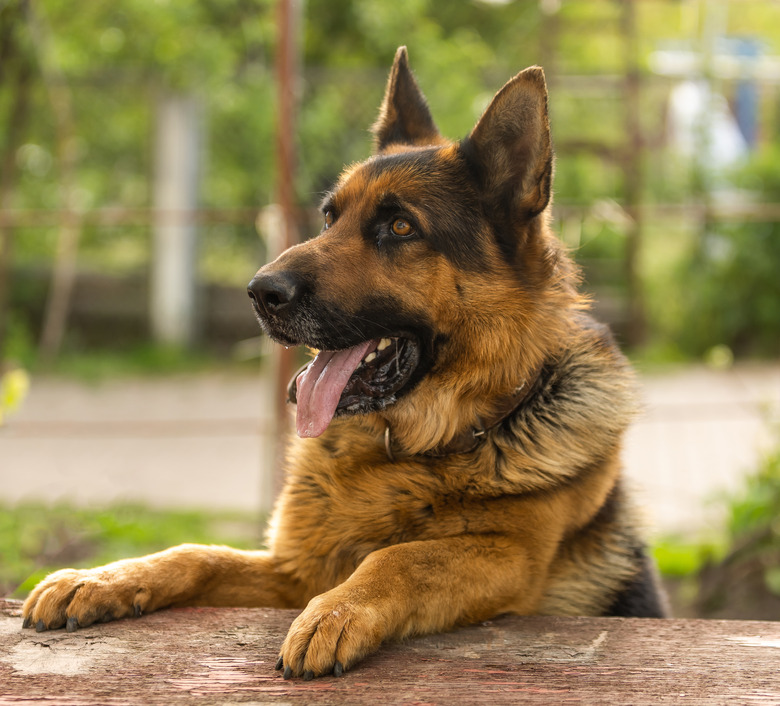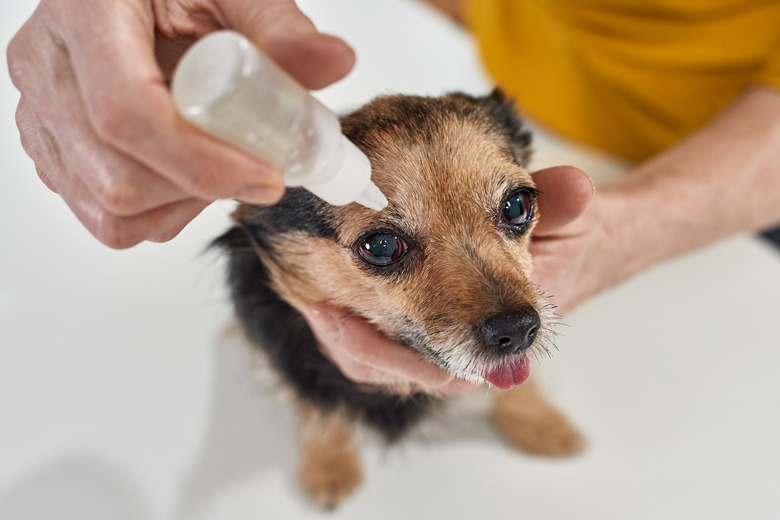Over-The-Counter Eye Ointments For Dogs
If your dog is suffering from an eye infection or eye irritation, you may want to pick up an over-the-counter eye ointment. However, some eye conditions are very serious. It is not advisable to treat eye conditions without consulting your veterinarian, as a delay in the correct treatment can permanently damage your dog's sight.
Veterinary diagnosis of eye conditions in dogs
Veterinary diagnosis of eye conditions in dogs
Always consult your veterinarian about dog eye problems before considering an over-the-counter option. Eye disorders, such as acute glaucoma, can come on suddenly, and if your dog does not receive appropriate treatment during the first 12 to 24 hours, they could lose their vision completely.
Conditions that may require dog eye drops
Conditions that may require dog eye drops
Eye issues are common in dogs, and some breeds are more likely to experience them due to the shape of their face, long fur around their eyes, or a genetic predisposition. Age, activity level, and exposure to environmental factors can also contribute to canine eye conditions that require drops or ointment. Some of the most common eye conditions in dogs include:
- Conjunctivitis, or pink eye: Conjunctivitis is an inflammation of the conjunctiva, the pink area in the corner of the eye. A yellow or green discharge, squinting, blinking, redness, and irritation may occur in one or both eyes. Conjunctivitis has many causes, including breed-specific predispositions. Antibiotic ointments, anti-inflammatory drops, and possibly oral medications may be necessary. Depending on the cause, surgery may be required.
- Corneal ulcers: Corneal ulcers are caused by a scratch or injury to the dog's cornea and can be very painful, so dogs often squint and try to rub their eyes. Yellow or green discharge may be seen, and the eye may appear cloudy. Some breeds are prone to corneal ulcers due to their protruding eyes. Antibiotic drops are a common treatment. If left untreated, the ulcer could rupture and permanently affect the dog's sight.
- Allergies: Environmental allergens, such as pollen and dust, can cause dogs to have red and itchy eyes. If left untreated, eye allergies can progress to conjunctivitis and bacterial infection. Corticosteroid or antihistamine drops are commonly prescribed. Topical immunomodulators or oral antihistamines may also be recommended.
- Dry eye: Dogs can get dry eyes if they cannot close their eyes properly. Flat-faced, brachycephalic dogs are predisposed to this condition for that reason. Decreased tear production caused by autoimmune or nerve disorders can also cause eye dryness in dogs. Lubricating eye drops and topical immunomodulators may be prescribed. These are lifelong treatments required to prevent serious damage to the eyes.
Types of eye drops for dogs
Types of eye drops for dogs
Most dog owners will experience ophthalmic problems with their dogs at some point. There are several types of eye drops and ointments that may be recommended, and it is helpful to be familiar with them.
- Antibiotic ointment: Broad-spectrum antibiotic eye ointments, such as Terramycin, are commonly used for dog eye infections and conjunctivitis. Terramycin can be purchased over the counter.
- Corticosteroids: Veterinarians prescribe corticosteroid drops, such as prednisolone and dexamethasone, to treat many inflammatory eye disorders in dogs. They are often included in a combined antibiotic steroid drop to treat inflammation and eye infections.
- Ocular lubricants: Artificial tears and eye lubricants are often recommended for dogs with dry or irritated eyes. They often contain a gel that hydrates and provides a liquid barrier on the eyes to keep them moisturized.
- Topical immunomodulator: Topical immunomodulators, such as Cyclosporine ointment, are immunosuppressant medications that can treat dry eye and other types of eye inflammation. These are off-label medications, so they must always be used under very close veterinary supervision.
- Saline eye drops: Saline drops can be used safely to clean dirt, debris, or foreign bodies from your dog's eye. If your pup continues to have irritation after using a saline eye wash, seek veterinary advice. The problem may not be dirt in the eye but rather a scratch on the cornea that needs additional treatment.
Tips for purchasing over-the-counter dog eye drops
Tips for purchasing over-the-counter dog eye drops
Aside from saline solution to clean debris from your dog's eye, do not purchase over-the-counter eye drops or ointments without veterinary guidance. If your dog has irritated or red eyes or is producing yellow or green discharge, see your veterinarian for a proper diagnosis.
Do not use human eye drops or ointments on your dog. Human medications for eyes contain ingredients that may be harmful to your dog, even in small amounts.
How to apply eye drops for dogs
How to apply eye drops for dogs
Putting eye ointment or drops in your dog's eye can be challenging, especially if the dog is in discomfort or has had previous unpleasant experiences associated with this type of treatment. Apply eye drops in a quiet and calm environment. You want your dog to be relaxed with few distractions when providing eye care to make the process easier for both of you.
- Practice several times without applying drops: Gently and calmly go through the procedure you will use to apply the eye medication but leave the cap on the bottle or tube. Every time you do this, praise your dog, give them high-value treats, and enjoy a fun activity with them. Practice multiple times before actually applying the drops.
- Always make the process a positive experience for your pup: Give them calm praise while you apply the drops and follow the treatment with a high-value treat or activity they love. Administering drops just before mealtime or walks will create the most positive associations.
- Ask for help holding your dog: If your dog is wiggly or finds sitting still difficult, having some assistance can make it safer, quicker, and easier.
- Position yourself behind the dog: If you find applying drops from the front tricky, an approach from the back may be more manageable. Wrap your hand under your dog's chin with your fingers extending toward the eye so that you can pull the lower lid down with your thumb or fingers. Use the applicator to give the recommended number of drops inside the lower lid.
The bottom line
The bottom line
There are many causes of eye problems in dogs that may require drops or ointment. Although mild over-the-counter saline drops can be useful in rinsing dust or debris from the eye, your dog should see a veterinarian if they show any signs of discharge, irritation, or discomfort, as these may be symptoms of a serious problem that could result in loss of sight. Do not use over-the-counter eye drops or ointment without your veterinarian's supervision. Your DVM will diagnose and prescribe a safe and effective treatment for your dog's eye problem.


